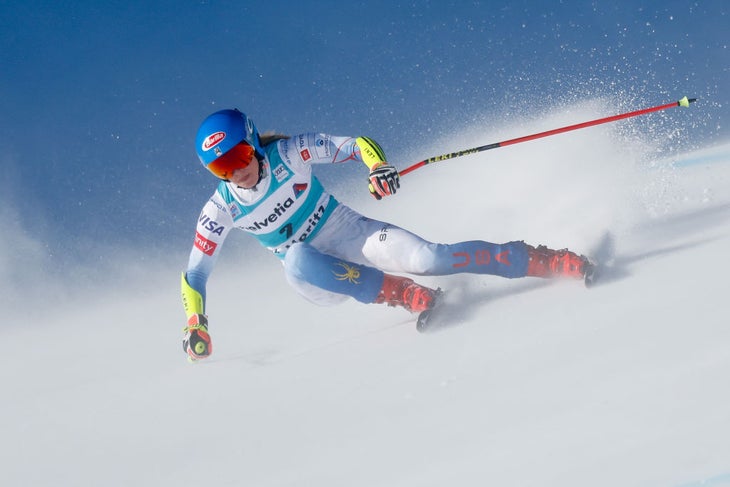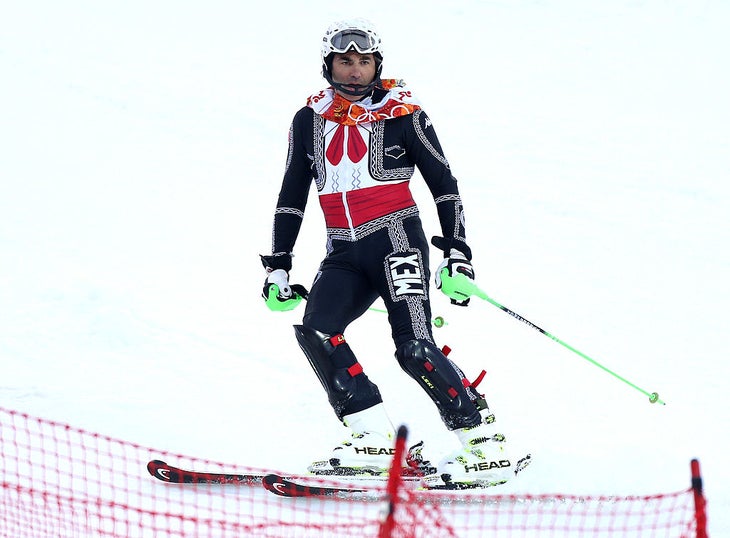Products You May Like
“I really want to be an expert at Olympic qualification and quota allocation,” said no one ever. And yet, every four years people care deeply about this very topic, and none more than the athletes themselves.
Marching behind your flag into the opening ceremonies and competing in the Olympics is a lifetime dream for many, and a reality for few. With the conclusion of the World Cup races in Kitzbühel and Cortina, all the Olympic alpine ski team rosters are now set.
Related: How to watch your favorite ski events of the 2022 Beijing Winter Olympics
For the Americans, the 17-person Olympic Team is their smallest since 1984. Headlined by superstar Mikaela Shiffrin, it includes World Cup winners Ryan Cochran-Siegle, Tommy Ford, Breezy Johnson (sadly out with injury), Bryce Bennett, and Travis Ganong. Notably missing are familiar names like three-time World Cup winner Steve Nyman, veteran Jared Goldberg, as well as World Junior slalom Champion Ben Ritchie, just now breaking through on the World Cup. The team includes 11 women and only six men, half as many as competed in PyeongChang in 2018.
What, then, did it take to get to Beijing?
Unlike in events like track and field or swimming, there are no designated Olympic trials. Instead, national federations set their own criteria, heavily based on World Cup competition, and aimed at selecting their top medal contenders. Ideally, these athletes all fit into the quota spots allotted to each nation by the International Olympic Committee (IOC). Some sort of quota system has been in place since at least the ’70s and has morphed over time. You can dive into the full process here on the FIS site, or take a short cut and read on.
Alpine Qualification: The Base Line
The IOC set a limit for alpine skiing of 153 men and 153 women in Beijing, with each team allowed a maximum of 22 total athletes, 11 per gender. By comparison, in 2018, 188 men and 134 women competed, with a team maximum of 14 per gender. We’ll come back to that.
Countries earn quota spots based on a three-part system. First, each country that wants to participate is allocated one male and female quota spot, so long as the athlete has achieved a ranking of under 160 FIS points (skiing’s international ranking system). In slalom and giant slalom that translates to about 4,000th in the world for men, 2,700th for women, which is a fairly low hurdle. For obvious safety reasons, the cut off is lower—80 FIS points—in speed events. These spots generally go to smaller countries where skiing is not widely available or practiced, aka “the Exotics.” We’ll come back to that, too.
From there, it moves to a merit system, based on the Olympic Quota Allocation List, which ranks male and female athletes from results in their best two events over a period of 2 ½ years. Selections then move down the list like a draft, allotting quota spots and skipping over any nation that has reached its max quota, until the total of 153 athletes per gender have been selected.
Reallocation: The Second Chance Sweepstakes
Once countries confirm or refuse their quota spots, the released spots are reallocated by moving down the draft list. This year, these reallocated spots are all gender-specific, meaning that teams can no longer accept all the quota spots they need, and spread them between their men’s and women’s team to field four starters per event (the max for all countries) in the most advantageous way. Some countries also refuse quota spots when they run out of athletes who have met their own Olympic qualifying criteria.

Because more women than men ski at the top level in multiple events, it typically takes fewer women to fill out a country’s most competitive team across all events. Of the three quota spots that were initially reallocated to the global men’s list, none were turned down. Meanwhile, 10 nations turned down at least one of the 22 additional quota spots reallocated for women.
While the U.S. claimed their two reallocated spots for women, they could not use them to include all of the men who scored World Cup points this year. As a result, the U.S. will not have enough men to field a full, four-person team in any single event. Exacerbating the comparative scarcity of quota spots for top men is the exotic factor.
The “Exotic” Factor
Again, nations where skiing is not widely available or practiced are known as the “exotics” when it comes to the Olympic qualification process. Skiers from these countries, featured in every Games, produce performances that range from brave and inspiring to entertaining and comedic. Among the most famous of them are 62-year-old Prince Hubertus von Hohenlohe, aiming to represent Mexico in his sixth Olympics, and British DJ Benjamin Alexander, skiing for just six years, who will become Jamaica’s first Olympic skier.

Under the previous quota rules, there were typically enough spots to accommodate medal contenders from each country as well as the exotics. With 85 total participating nations this year (up from 80), 22 of which do not have any female athletes, the overwhelmingly male exotic contingent further shrunk the quota pool for the World Cup-level men, affecting even the biggest ski powerhouses like Austria.
The revelation that many of these exotics achieved eligibility, through questionable competitions, led to a last-minute protest by Austria, yielding four more male spots, including two for Austria, and ultimately overriding IOC rules for both the total number of athletes and gender parity. In the end, 152 women and 157 men made the cut for Beijing.
The Bottom Line
Team USA is not alone in feeling the pain of the quota crunch on the men’s team. But the small roster is especially unfortunate for the U.S. in the speed events, where teams would ideally bring their broadest possible range of skill sets and experience for these completely untested venues.
Small but mighty Team USA will run three solid contenders in downhill, super-G, and giant slalom, with Ryan Cochran-Siegle expected to start in all three events. Luke Winters will likely be our lone slalom skier. On the women’s side, losing Johnson is a major blow. Her spot will not be replaced, but we have enough women with speed chops to fill four spots in each event. Shiffrin is either a medal favorite or contender in all events she chooses to race, while Paula Moltzan and Nina O’Brien are solid medal contenders in the tech events.
What we’re missing in Beijing are the dark horses and long shots—the Steve Nymans and Ben Ritchies—athletes at both ends of the age and experience spectrum who often provide the most memorable and surprising Olympic performances. What we’re getting, no doubt, will be Olympic-level drama in perhaps the least likely venue we’ve never seen. And to that we say, Games On!
Read On
Here’s why the Beijing Olympics will be unlike previous Games
How China plans to become the next big ski nation
How Paula Moltzan battled her way to Beijing after being cut from the U.S. Ski Team
